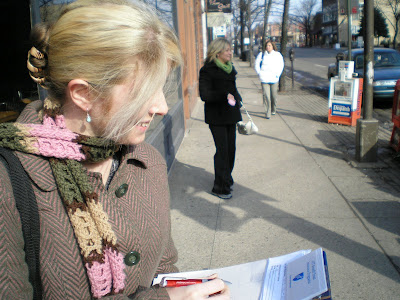The Columbus Neighborhood Identity Project focuses on
representing the social geography of individuals living and working
within the boundaries of Columbus. We have and will continue to
utilize various observational methods to assemble information
from different sources and representational points of view about
the communities we are mapping. While conducting participant
observation studies, the individuals encountered in the
neighborhoods are asked to create visual representations (ex.
mental maps, drawings, etc.) of the areas they occupy. Providing
art supplies and conducting informal interviews facilitates this
process. During this interaction and exchange of information with
the participant, the process is recorded using video and still
photography. In turn, we map out the various representations
digitally and utilizing GIS software such as ArcMap. Through this
study and the consequent artworks produced, we are interested in
how space and society are mutually constituted in individual
representations.
By gathering a wide range of information from the citizens of
Columbus, we hope to gain a broader understanding of the city we
live in and our neighbors. Examining the city through their eyes,
we will compare the neighborhoods within the city and it’s various
inhabitants’ points of view. During our encounters with local
inhabitants, we simply ask if they have a few moments to chat with
us and allow them to lead the discussion of their neighborhood.
Many residents speak of changes within their neighborhoods over
the years and why they have chosen to move to or remain residents
of their neighborhood over the years. We will be examining the
social geographies they represent in terms of what information
participants choose to share with us during our interactions. As a
group, we understand that our research methods are subject to a
number of variables. This includes issues such as weather
conditions, willingness on behalf of the participant, areas
information is garnered, times of the day field work was
conducted, and certainly the biases we bring from our collective
experiences as a group.





